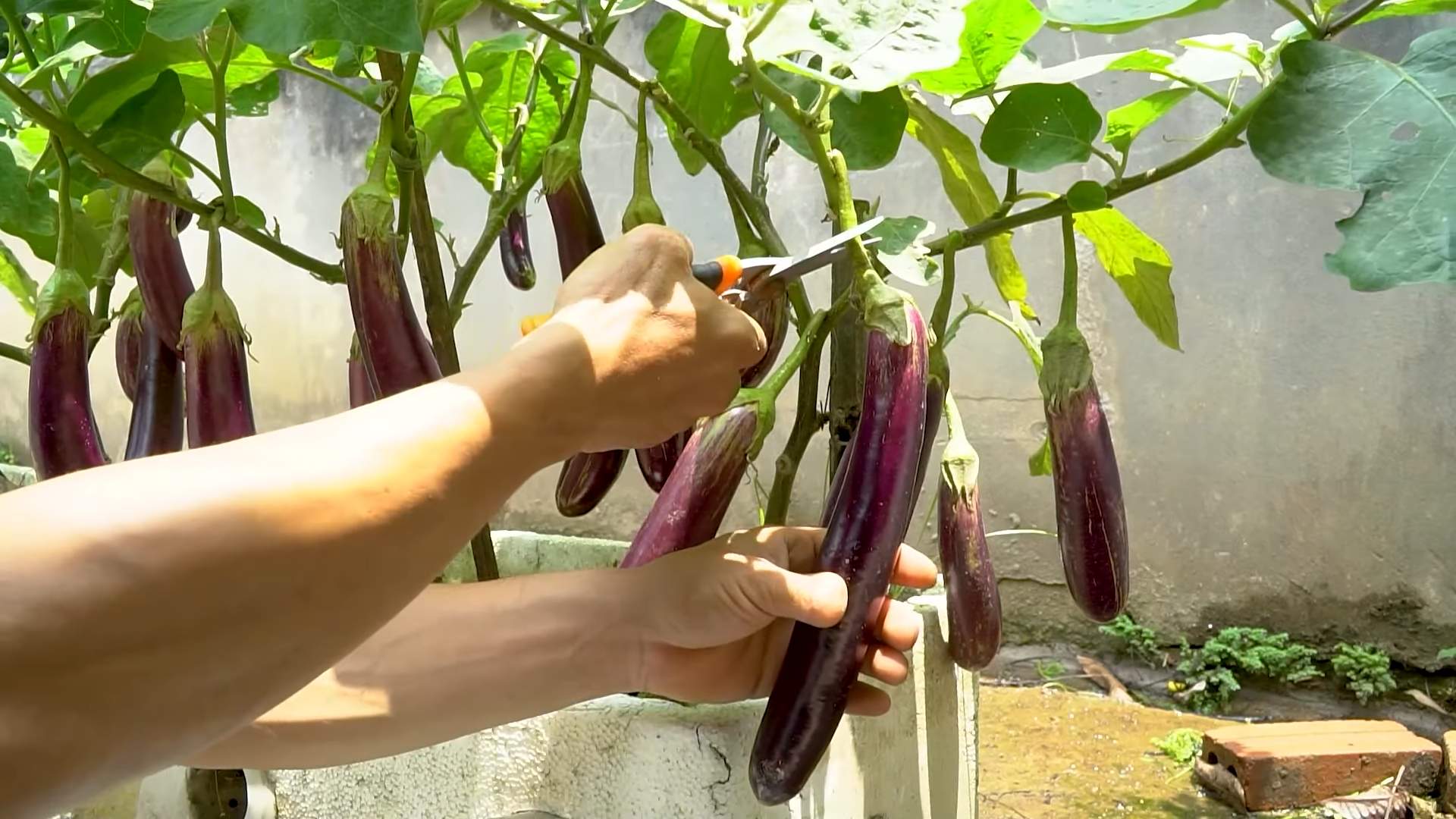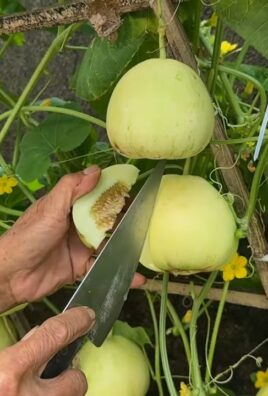Easy Eggplant Growing: Your Guide to a Bountiful Harvest
Easy Eggplant Growing isn’t just a catchy phrase; it’s the key to unlocking a world of delicious, homegrown flavor! I’ve always loved the rich, smoky taste of eggplant, but for years, I struggled to grow it successfully. The plants seemed temperamental, the fruits small, and the overall experience frustrating. Then, I discovered a collection of simple yet effective tricks and DIY solutions that transformed my eggplant gardening from a source of stress to a source of pride (and delicious baba ghanoush!). This article is the culmination of my journey, a compilation of Easy Eggplant Growing techniques that will help you achieve the same bountiful harvest I now enjoy.
Eggplant, with its glossy purple skin and versatile culinary uses, holds a significant place in many cultures around the world. From the Mediterranean, where it’s a staple in countless dishes, to Asia, where it features prominently in stir-fries and curries, eggplant has a rich history interwoven with human civilization. But you don’t need to be a seasoned gardener or culinary expert to enjoy the fruits (or should I say, vegetables!) of your labor.
Why You Need These Easy Eggplant Growing Hacks
Let’s face it: buying eggplant from the supermarket is convenient, but it often lacks the vibrant flavor and freshness of homegrown produce. Plus, there’s an undeniable satisfaction in nurturing a plant from seed to harvest, watching it thrive under your care. These Easy Eggplant Growing tips and DIY projects will empower you to cultivate healthy, productive eggplant plants, even if you have limited gardening experience or space. Whether you’re a seasoned gardener looking to refine your techniques or a complete beginner taking your first steps into the world of homegrown vegetables, this guide is designed to make eggplant cultivation a rewarding and enjoyable experience.

Easy Eggplant Growing: A Guide to a Bountiful Harvest
Growing eggplants might seem daunting, but I promise you, it’s easier than you think! Follow these steps, and you’ll be enjoying your homegrown eggplants in no time.
Phase 1: Planning and Preparation
- Choose the right variety: Research eggplant varieties suited to your climate. Some are better for hot climates, while others thrive in cooler temperatures. Consider the size and color you prefer too – there’s a huge variety out there!
- Timing is key: Eggplants need warm soil. Start seeds indoors 6-8 weeks before the last expected frost in your area. This gives them a head start and ensures a longer growing season.
- Gather your supplies: You’ll need seed starting mix (not regular garden soil!), small pots or seed trays, a heat mat (optional but highly recommended), grow lights (if you don’t have a sunny spot), watering can, and gardening gloves.
- Prepare your soil: Eggplants love well-drained, fertile soil. Amend your garden bed with plenty of compost or aged manure before planting. This will improve drainage and provide essential nutrients.
Phase 2: Starting Seeds Indoors
- Sow the seeds: Fill your seed starting pots or trays with seed starting mix. Plant one or two seeds per pot, about ½ inch deep. Gently cover with soil.
- Water gently: Use a watering can with a fine rose to avoid disturbing the seeds. Keep the soil consistently moist, but not soggy.
- Provide warmth and light: Place your seed trays on a heat mat set to around 70-75°F (21-24°C). This will significantly speed up germination. Ensure they receive at least 6-8 hours of sunlight per day. A sunny windowsill is ideal, but you may need supplemental grow lights, especially during winter.
- Monitor for germination: Germination usually takes 7-14 days. Once you see seedlings emerge, you can reduce the heat mat temperature slightly.
- Thin seedlings: If you planted two seeds per pot and both germinated, carefully remove the weaker seedling, leaving only the strongest one. This gives the remaining plant more space to grow.
- Harden off seedlings: A few weeks before transplanting outdoors, gradually acclimate your seedlings to outdoor conditions. Start by placing them outside for a short period each day, gradually increasing the time until they can tolerate full sun and temperature fluctuations.
Phase 3: Transplanting and Ongoing Care
- Prepare the planting site: Choose a sunny location in your garden with well-drained soil. Eggplants need at least 6-8 hours of sunlight per day.
- Dig planting holes: Dig holes slightly larger than your seedling pots. Space plants 18-24 inches apart to allow for adequate growth.
- Transplant seedlings: Carefully remove the seedlings from their pots, being mindful not to damage the roots. Plant them in the prepared holes, covering the roots with soil.
- Water thoroughly: Water deeply after transplanting to help the seedlings settle in.
- Mulch around plants: Apply a layer of mulch (straw, wood chips, or shredded leaves) around the base of the plants to help retain moisture, suppress weeds, and regulate soil temperature.
- Water regularly: Eggplants need consistent moisture, especially during hot and dry periods. Water deeply and regularly, aiming for about 1 inch of water per week.
- Fertilize as needed: Feed your eggplants with a balanced fertilizer every 2-3 weeks. Follow the instructions on the fertilizer package.
- Support tall varieties: Some eggplant varieties can grow quite tall and may need staking or caging to prevent them from flopping over.
- Monitor for pests and diseases: Regularly inspect your plants for signs of pests (like aphids or flea beetles) or diseases. Take appropriate action if necessary, using organic pest control methods whenever possible.
- Harvest when ripe: Eggplants are ready for harvest when they are firm, glossy, and have reached their mature size and color. The skin should be smooth and free of blemishes.
Phase 4: Harvesting and Enjoying Your Eggplants
Once your eggplants are ripe, gently twist them off the plant. Don’t pull, as this could damage the plant. Enjoy your delicious, homegrown eggplants! They’re fantastic grilled, roasted, fried, or added to your favorite dishes. Remember to harvest regularly to encourage continued production.
Tips for Success:
- Avoid overwatering: Soggy soil can lead to root rot.
- Provide good air circulation: This helps prevent fungal diseases.
- Be patient: Eggplants take time to mature, so don’t get discouraged if you don’t see fruit immediately.
- Experiment with different varieties: Try growing different types of eggplants to find your favorites.
Troubleshooting:
- Blossom drop: This can be caused by inconsistent watering, temperature fluctuations, or insufficient pollination. Ensure consistent watering and consider hand-pollinating the flowers if necessary.
- Yellowing leaves: This could indicate nutrient deficiencies, overwatering, or pest problems. Check your soil and look for pests.
- Small or misshapen fruit: This can be due to poor pollination, lack of nutrients, or inconsistent watering.

Conclusion
So there you have it – your guide to effortlessly growing your own eggplants! This DIY approach to eggplant cultivation isn’t just about saving money; it’s about experiencing the unparalleled satisfaction of nurturing a plant from seed to harvest. The taste of a homegrown eggplant, bursting with flavor and ripened perfectly under your care, is simply unmatched. This Easy Eggplant Growing method simplifies the process, making it accessible to even the most novice gardeners. You’ll be amazed at how rewarding it is to watch these beautiful plants thrive, producing an abundance of delicious fruit for your culinary creations. The sense of accomplishment, coupled with the fresh, flavorful eggplants you’ll enjoy, makes this DIY project a true must-try.
Beyond the basic method outlined, there are countless ways to personalize your Easy Eggplant Growing journey. Experiment with different eggplant varieties – from the classic globe eggplant to the long, slender Japanese eggplants. Each variety offers a unique flavor profile and growing habit, allowing you to tailor your garden to your preferences. Consider companion planting; basil, marigolds, and even rosemary can help deter pests and improve the overall health of your eggplant plants. If you have limited space, explore vertical gardening techniques or container gardening, adapting the method to suit your available area. Don’t be afraid to get creative! Try different soil mixes, experiment with different watering techniques, and observe your plants closely to understand their individual needs. The beauty of this DIY approach is its flexibility; you can adapt it to fit your specific circumstances and gardening style.
Ultimately, the success of your Easy Eggplant Growing endeavor depends on your dedication and attention to detail. But trust us, the rewards far outweigh the effort. The vibrant purple fruits, brimming with flavor, are a testament to your gardening prowess and a delicious reward for your hard work. So, gather your seeds, prepare your soil, and embark on this rewarding gardening adventure. We encourage you to try this Easy Eggplant Growing method and share your experience with us! Post pictures of your thriving plants and delicious harvests on social media using #EasyEggplantGrowing – we’d love to see your success stories and learn from your experiences. Let’s build a community of home gardeners, sharing tips, tricks, and the joy of growing our own food. Happy gardening!
Frequently Asked Questions
What type of soil is best for growing eggplants?
Eggplants thrive in well-drained, fertile soil with a slightly acidic pH level (between 6.0 and 6.8). Amend heavy clay soils with compost or other organic matter to improve drainage and aeration. Sandy soils may benefit from the addition of peat moss or other organic materials to increase water retention. A soil test can help determine the precise nutrient levels and pH of your soil, allowing you to make necessary adjustments before planting. Remember, healthy soil is the foundation for healthy plants!
How much sunlight do eggplant plants need?
Eggplants are sun-worshippers! They require at least six to eight hours of direct sunlight per day to produce a bountiful harvest. Choose a location in your garden that receives ample sunlight throughout the day. If you live in a particularly hot climate, consider providing some afternoon shade to prevent the plants from wilting. Observe your plants carefully; if they appear to be struggling in intense sunlight, you may need to adjust their location or provide some shade during the hottest part of the day.
How often should I water my eggplant plants?
Consistent watering is crucial for healthy eggplant growth. Aim to keep the soil consistently moist but not waterlogged. Water deeply and less frequently, rather than shallowly and often. The frequency of watering will depend on factors such as weather conditions, soil type, and the size of your plants. Check the soil moisture regularly by sticking your finger a couple of inches into the soil. If the soil feels dry, it’s time to water. Avoid overhead watering, as this can lead to fungal diseases. Instead, water at the base of the plants to keep the foliage dry.
What are some common eggplant pests and diseases?
Eggplants can be susceptible to various pests and diseases, including aphids, flea beetles, spider mites, and blossom-end rot. Regularly inspect your plants for signs of infestation or disease. Early detection and prompt action are key to preventing widespread damage. Consider using organic pest control methods, such as insecticidal soap or neem oil, to manage pests. Proper watering and good air circulation can help prevent fungal diseases. Rotating your crops annually can also help reduce the risk of pest and disease problems. Remember, prevention is always better than cure!
When can I harvest my eggplants?
Eggplants are typically ready for harvest when they are firm, glossy, and have reached their mature size and color for the specific variety. Avoid harvesting eggplants that are too small or too large, as these may not be as flavorful. Use a sharp knife or pruning shears to harvest the eggplants, leaving a short stem attached. Harvesting regularly encourages the plant to produce more fruit. Enjoy the fruits of your labor – your homegrown eggplants are ready to be enjoyed in a variety of delicious dishes!





Leave a Comment